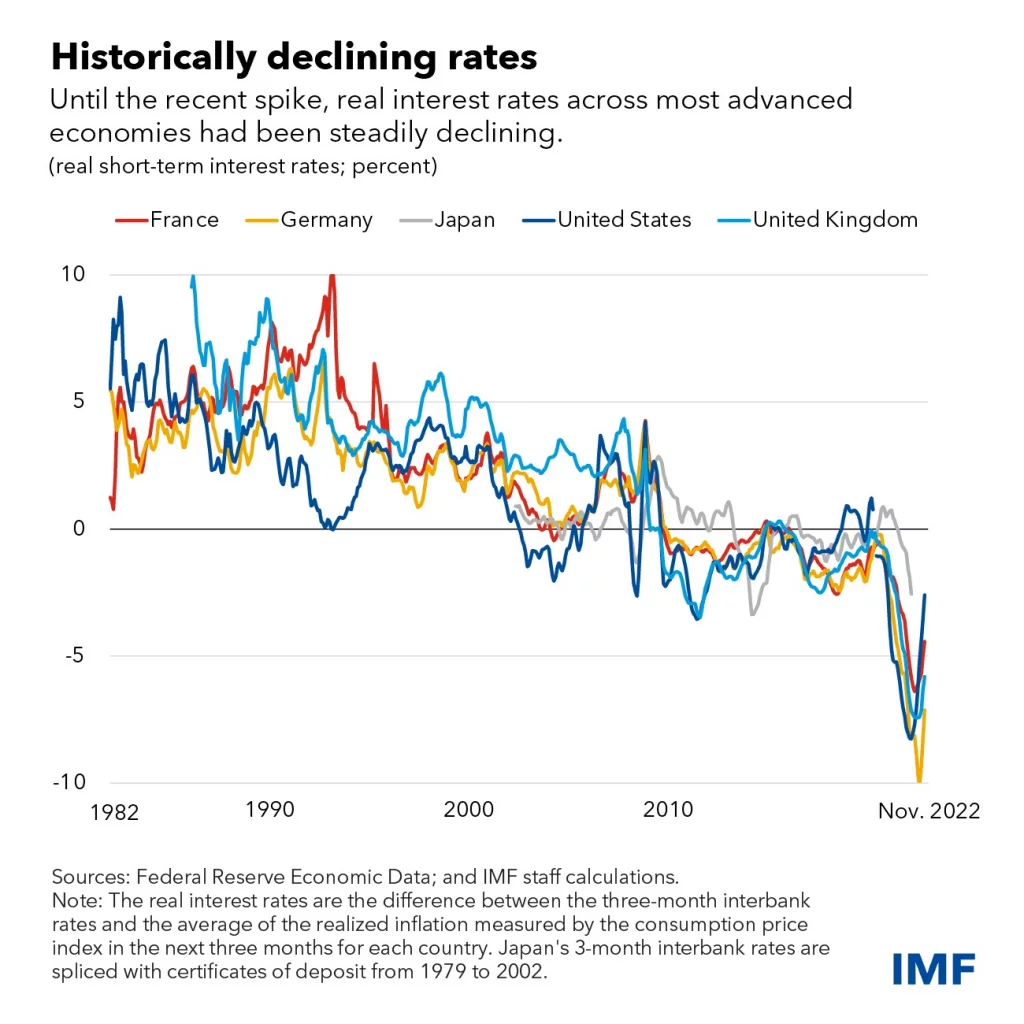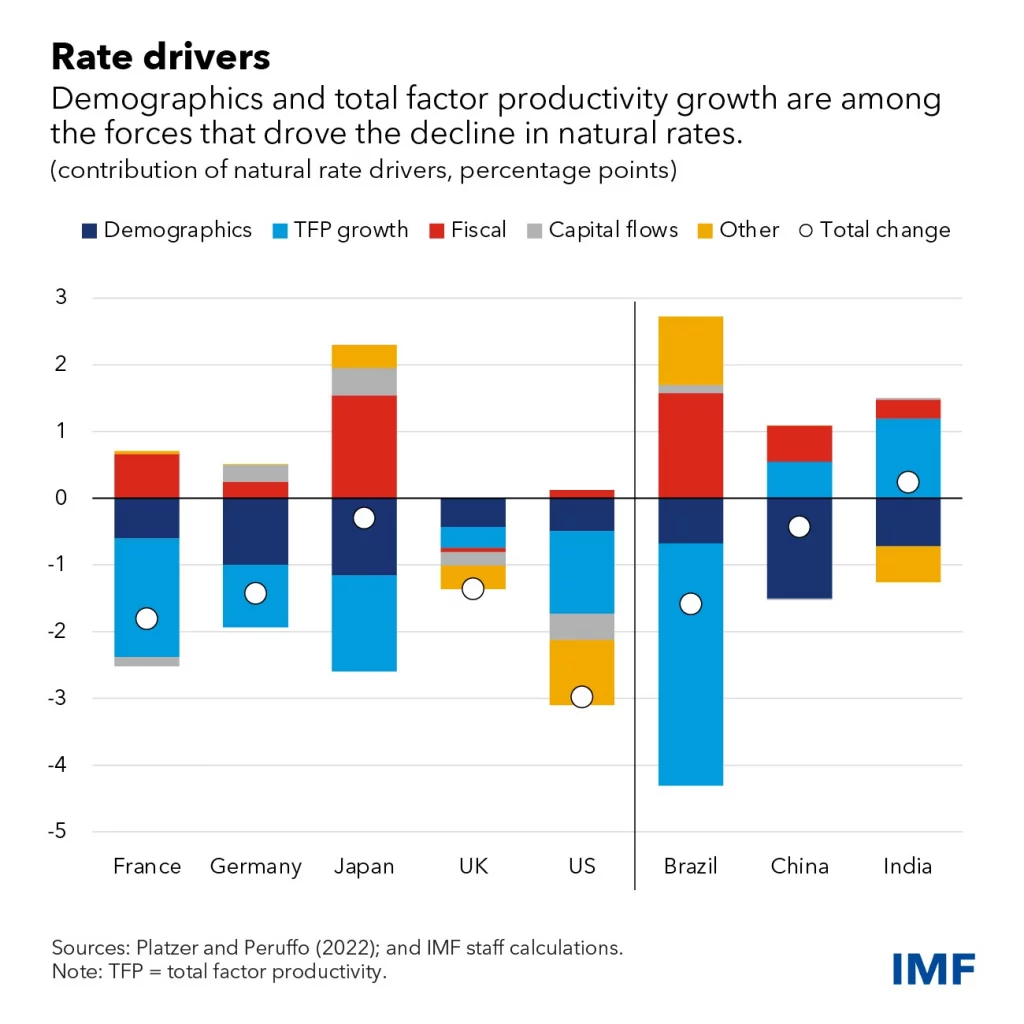Washington DC April 11 2023: Recent increases in real interest rates are likely to be temporary. When inflation is brought back under control, advanced economies’ central banks are likely to ease monetary policy and bring real interest rates back towards pre-pandemic levels, says IMF in its recent report.
Real interest rates have rapidly increased recently as monetary policy has tightened in response to higher inflation. Whether this uptick is temporary or partly reflects structural factors is an important question for policymakers.
Since the mid-1980s, real interest rates at all maturities and across most advanced economies have been steadily declining. Such long-run changes in real rates likely reflect a decline in the natural rate, which is the real interest rate that would keep inflation at target and the economy operating at full employment–neither expansionary nor contractionary.
The natural rate is a reference point for central banks that use it to gauge the stance of monetary policy. It is also important for fiscal policy. Because governments typically pay back debt over decades, the natural rate—the anchor for real rates in the long term—helps determine the cost of borrowing and the sustainability of public debts.

Real interest rates have rapidly increased recently as monetary policy has tightened in response to higher inflation. Whether this uptick is temporary or partly reflects structural factors is an important question for policymakers.
Since the mid-1980s, real interest rates at all maturities and across most advanced economies have been steadily declining. Such long-run changes in real rates likely reflect a decline in the natural rate, which is the real interest rate that would keep inflation at target and the economy operating at full employment–neither expansionary nor contractionary.
The natural rate is a reference point for central banks that use it to gauge the stance of monetary policy. It is also important for fiscal policy. Because governments typically pay back debt over decades, the natural rate—the anchor for real rates in the long term—helps determine the cost of borrowing and the sustainability of public debts.

Outlook for real interest rates
These factors are not likely to behave very differently in the future, so natural rates in advanced economies will likely remain low. As emerging market economies adopt more advanced technology, total factor productivity growth is expected to converge to the pace of advanced economies. When combined with an aging population, natural rates in emerging market economies are projected to decline towards advanced economies’ rates over the long term.
Of course, this projection is as good as the projection of the underlying drivers. In the current post-pandemic context, alternative assumptions could be relevant:
Government support may be difficult to withdraw, increasing public debt. As a result, so-called convenience yields—the premium paid by investors in the form of foregone interest for holding scarce, safe, and liquid government debt—may erode, raising natural rates in the process.
Transitioning to a cleaner economy in a budget neutral way would tend to push global natural rates lower in the medium term, as higher energy prices (reflecting a combination of taxes and regulations) would bring down the marginal productivity of capital. However, deficit-financing of public investment in green infrastructure and subsidies could potentially offset and even reverse this result.
Deglobalization forces could intensify, leading to both trade and financial fragmentation, and bringing the natural rate up in advanced economies and down in emerging market economies.
Individually these scenarios would have only limited effects on the natural rate but a combination, especially of the first and third scenarios, could have a significant impact in the long run.

Overall, our analysis suggests that recent increases in real interest rates are likely to be temporary. When inflation is brought back under control, advanced economies’ central banks are likely to ease monetary policy and bring real interest rates back towards pre-pandemic levels. How close to those levels will depend on whether alternative scenarios involving persistently higher government debt and deficits, or financial fragmentation materialize. In large emerging markets, conservative projections of future demographic and productivity trends suggest a gradual convergence towards advanced economies’ real interest rates.










